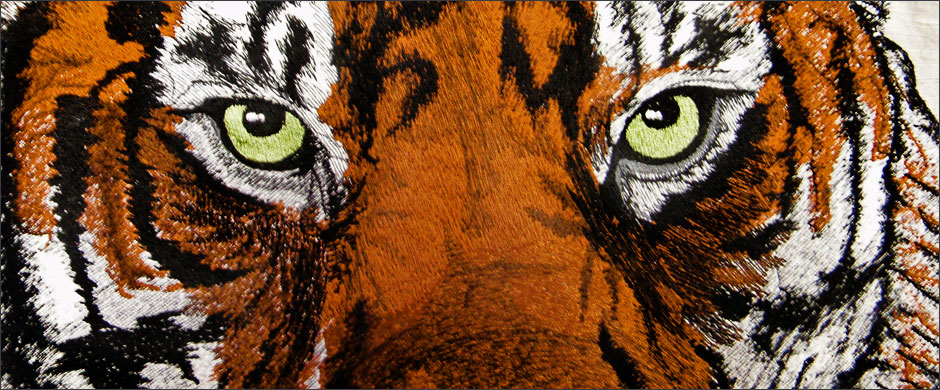Efficient Digitizing for Embroidery: Quick Turnaround
Wiki Article
Streamlining the Art of Needlework Digitizing: Step-by-Step Overview
Embroidery digitizing is a careful craft that requires accuracy and imagination. As technology remains to development, the digitization procedure has actually ended up being a lot more easily accessible, enabling enthusiasts to bring their intricate designs to life with convenience. In this overview, we will certainly decipher the complexities of embroidery digitizing, damaging down each step methodically to simplify the procedure and empower both newbies and experienced embroiderers alike. Stay tuned to discover how you can streamline this complex art kind and transform your creative visions right into wonderfully stitched masterpieces.Recognizing Embroidery Digitizing Software Program
Needlework digitizing software application works as a critical tool for changing intricate styles into digital styles suitable with embroidery makers, assisting in accurate stitching and personalization. This specific software application enables customers to import various photo file formats, such as JPG or PNG, and convert them into embroidery machine-readable layouts like DST, EXP, or PES - Digitizing for Embroidery. By making use of functions like stitch editing, underlay choices, and string color selection, digitizing software application makes it possible for individuals to control every element of the style procedureMoreover, advanced embroidery digitizing software application uses devices for developing intricate styles, adjusting stitch density, and integrating complex information. Individuals can likewise sneak peek the style before stitching it out, making sure precision and decreasing mistakes. Additionally, numerous software application supply automatic functions that assist improve the digitizing process, saving effort and time.
Understanding the capabilities of needlework digitizing software program is important for achieving premium cause embroidery jobs. By grasping this device, embroidery enthusiasts and professionals can unleash their creativity and bring elaborate styles to life with precision and efficiency.

Selecting the Right Style Documents
After familiarizing yourself with the abilities of needlework digitizing software program, the following essential action in the process is picking the right layout documents for your task. Digitizing for Embroidery. When selecting a style file for needlework digitizing, it's necessary to think about the complexity of the layout, the dimension of the final item, and the sort of material you will be working withFor detailed styles with fine details, a high-resolution photo or vector data is recommended to ensure that the needlework maker can precisely replicate the design. Additionally, the dimension of the end product plays a substantial duty in picking the ideal design documents. Larger layouts may require greater resolution files to keep clearness and intensity.
Moreover, the sort of textile you will be embroidering on affects the option of layout documents. Various materials might need adjustments in the style data to ensure that the stitches are appropriately straightened and the design looks like planned. By carefully choosing the ideal layout file based on these aspects, you can set yourself up for an effective needlework digitizing procedure.
Digitizing Devices and Techniques
Using specialized software application and accuracy strategies, digitizing devices are vital in changing detailed styles into embroidery-ready data. Embroidery digitizing software application, such as Wilcom, Hatch, or Embrilliance, gives the essential system to convert art work right into stitch information. These programs offer features like stitch modifying, rug choices, and lettering tools to guarantee the style translates perfectly onto material.One of the key techniques in digitizing is creating a clear path for the needlework maker to comply with. This includes digitizing each aspect of the design with precision, determining stitch kinds, thickness, and instructions. By utilizing devices like digitizing tablets or software-specific plugins, embroiderers can accomplish a high level of accuracy in their digitized styles.
Furthermore, understanding the art of padding sewing is important for creating quality needlework. Underlay stitching stabilizes the textile and produces a foundation for the design, making certain that the end product is both visually enticing and durable. By comprehending these digitizing tools and strategies, embroiderers can elevate their craft and bring detailed styles to life with accuracy and effectiveness.
Personalizing Stitch Types and Instructions
Having established a structure in digitizing tools hop over to these guys and strategies, an essential element beforehand needlework craftsmanship hinges on personalizing stitch types and directions with precision and purpose. The choice of stitch types can dramatically affect the overall look and texture of the stitched layout. Satin stitches, recognized for their smooth and shiny coating, work well for creating borders and message. On the other hand, fill stitches are suitable for covering bigger locations efficiently. By strategically combining these stitch kinds, embroiderers can achieve depth and measurement in their styles.Furthermore, the direction of stitches plays a critical function in improving the visual charm of the final embroidery. By trying out with different stitch angles and patterns, embroiderers can bring their designs to life with remarkable information and details.
Screening and Refining Your Digitized Layout
To make certain the precision and high quality of your digitized layout, complete testing and refinement are crucial action in the embroidery digitizing process. Once you have actually finished the digitization of your style, it is vital to check it before proceeding with the actual needlework. Examining permits you to determine any type of potential issues such as thread breaks, stitch density problems, or design distortions that might influence the final result.
After screening, it is necessary to refine your digitized design based on the feedback from the examination sew-out. This may involve tweaking stitch setups, changing thickness, or making changes to the general design to accomplish the wanted end result. By repeating through screening and improvement, you can tweak your digitized style to perfection before progressing with the actual embroidery process.
Final Thought
In conclusion, understanding the art of embroidery digitizing requires a comprehensive understanding of the software, selecting the appropriate style file, using digitizing devices and methods, customizing click site stitch kinds and reference directions, and screening and refining the digitized design. By following these actions, embroiderers can simplify the digitizing process and create high-grade stitched layouts with precision and performance.Report this wiki page